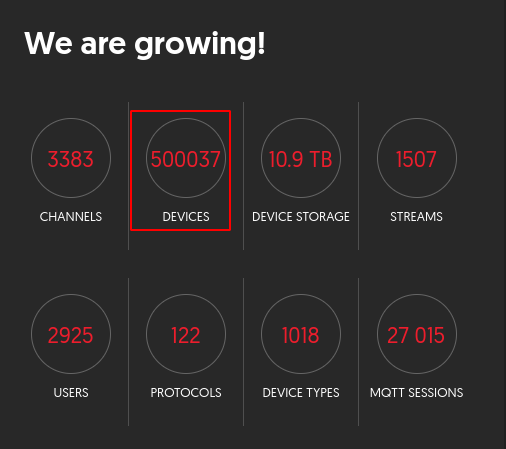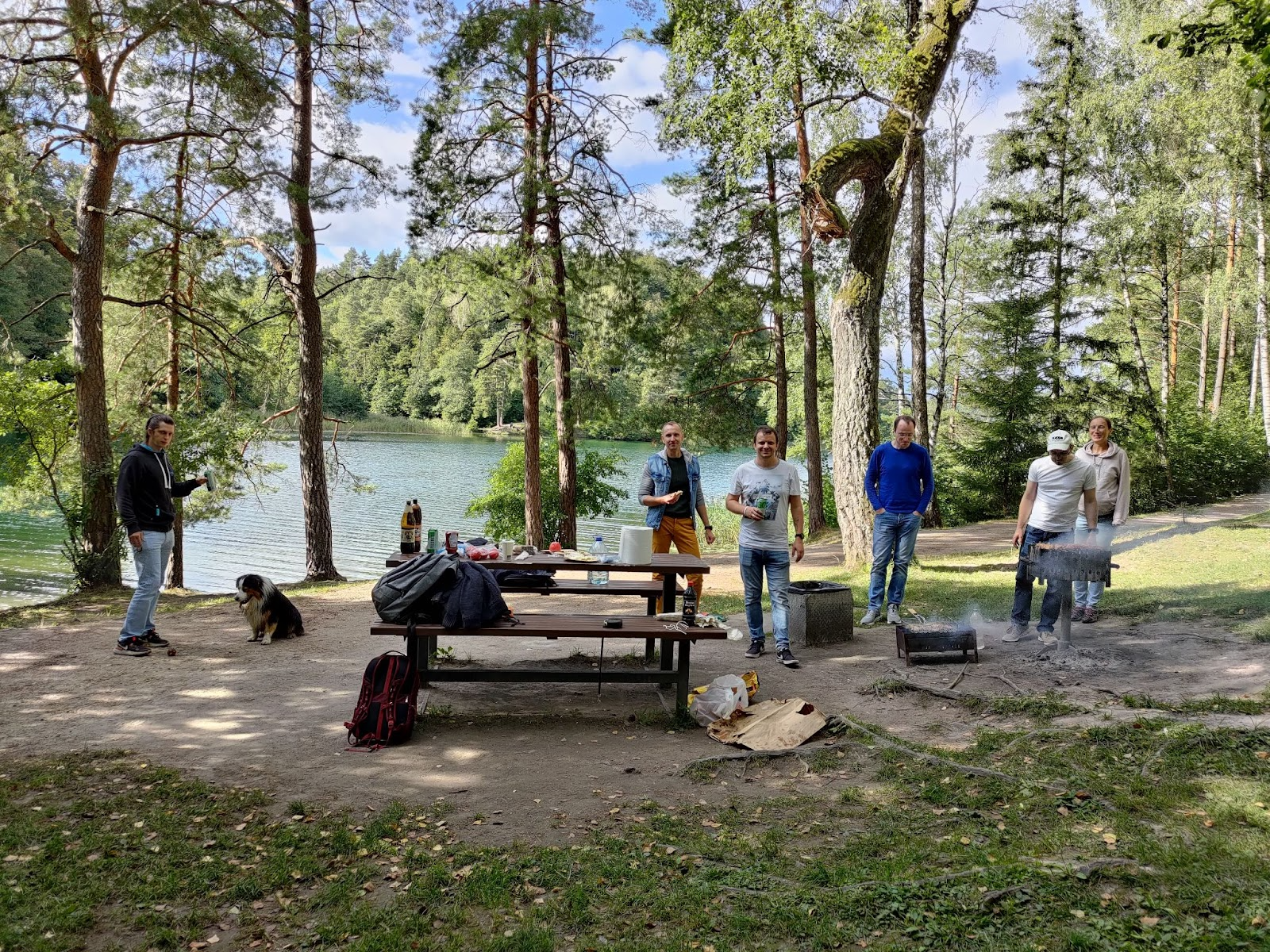I do not know how it is in other parts of the world, but in Lithuania, in September I could feel the breeze of autumn and last week I made a personal decision to prepare for winter and start to wear warm clothes and cancel for next 6 months any dreams about the warm summer. Well, it looks like the weather is bringing fundamental changes in our life, together with the counter-offensive operation in Ukraine, where Ukrainians have just changed the flow of the war with more and more territories regained after occupation.
Meanwhile, our monthly uptime in September was 99.9977% due to a short 34-second network hiccup on September 24. I’m not sure if anybody has noticed this except our bots, but unfortunately, that small downtime interrupted our 4-month series with 100% uptime.
In September, to be precise on September 19, we reached an important milestone — we achieved 500,000 devices registered in flespi:
Compared to the world’s leading platforms with their 3-10 million devices, vehicles and users this is not that much of course. I believe that by the end of 2023 we should reach our first million registered devices. Of course, it depends on a lot of factors, such as, for instance, an expected worldwide recession, but still, I’m looking very optimistically into the future not only for flespi, but also for the whole telematics industry within the IoT sector. Based on my 20 years of experience in the field, when a crisis comes, businesses start to look for ways to optimize resources and telematics is a good way to go for most of them. The same is true for the telematics service providers and platform developers — when a crisis knocks on the door, they also look for ways to optimize their costs and flespi as a telematics hub with more than a thousand integrated devices, unbeatable stability, and exceptional support by an experienced engineering team is a perfect choice for them. We didn’t miss the opportunity to celebrate the milestone and gathered for a BBQ party outside. Can you identify who is from the flespi team in the photo below?
To be on the edge of technology we are constantly working on our platform making it better and easier to use and enhancing it with new functionality almost every month. Nevertheless, with new features, we are still focused on API-only usage. Our intentions are to provide simple tools to automate everything that is possible to automate in the telematics industry and give flexible tools to script anything on top of that.
I see that our customers are starting to use flespi more and more not just as a hub for in/out data flow but as a system for telematics data storage and processing. And this is a good sign that we are moving in the right direction with platform development.
To help such users we released device groups. They are intended to simplify device management starting from certain volumes. Group can be linked to plugins, calculators, and streams and any device included in the group will automatically be associated with the corresponding item. The same works for access control and simplifies ACL and token management.
Device groups are available via REST API at the moment and will be introduced in the UI at flespi.io later this month. We will publish a special blog article describing all possible uses of the device groups in a little while. However, you are welcome to try groups anytime — they should be very intuitive and easy to use.
One more feature for our advanced users that rely on flespi for data processing is the new “update_onchange” property for calculators. It is designed for production-grade calculators to protect from automatic historical data recalculation after changing calculators' configuration.
And final enhancement for advanced flespi users is the possibility to select devices in REST API selectors for plugins, streams, and calculators using standard device fields. For example, this call will subscribe all devices of wialon-ips protocol to stream id=123. And this call will add all devices whose telemetry has a positive vehicle.mileage value (e.g. mileage is available for them) to plugin id=123. In some circumstances, this should make scripting much easier.
This summer we scheduled a strategic flespi session at the end of September, which we have effectively conducted recently. Even our VP of Business Development, Sergei Leuchanka from Boston for the first time since fall 2021 left the USA and visited Vilnius for a few days in order to participate in the session and together with the team define our vision and milestones for the next 3-5 years. You might not believe me but the picture below captures the exact moment of time when we defined our general development direction for the next three years:
A little bit later, after finalizing the details and milestones, I will share this vision with our users. And by the way here is a small video of our full team:
The session was active and productive. We synchronized our position on a lot of points, clarified what we do for free, what we should charge our users for, and how we see flespi, its team, and its services in the next 3-5 years.
Here’s a list of integrated protocols in September: Webfleet Connect, Avema, i365.
As usual, we added some minor improvements in flespi.io such as various charts on the dashboard, a special button to move channels between subaccounts, various embedded assistants trying to predict your next step, and so on.
In October we want to deliver fully-featured UI and documentation for device groups and enhance flespi.io with access to billing information (invoices, billing statistics, auto-payments, and so on) for more convenient use by large enterprises with established PO-based purchasing processes.


